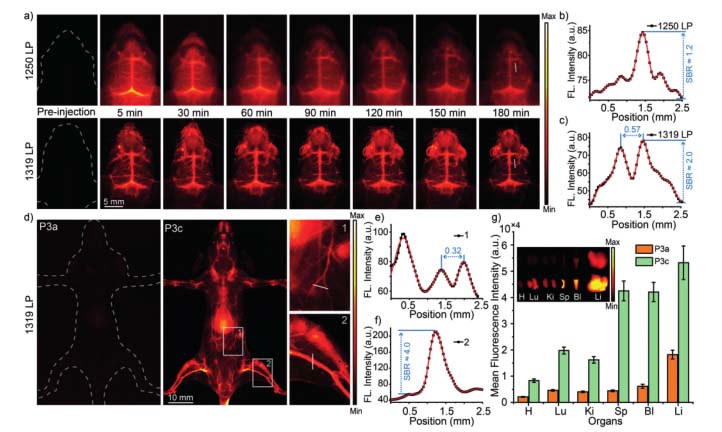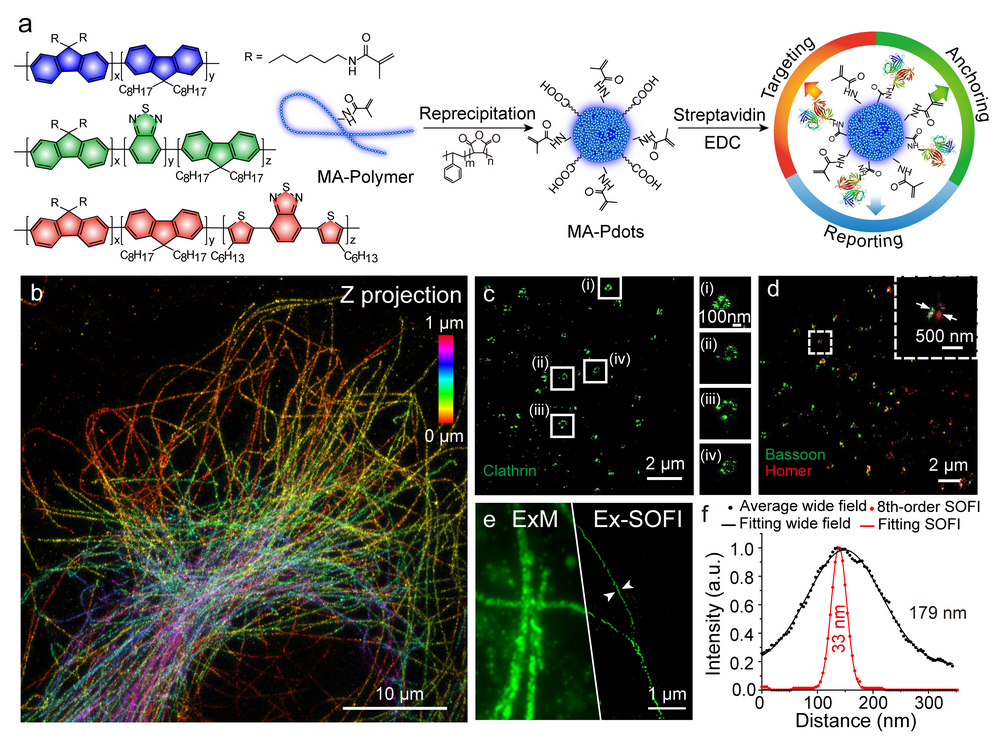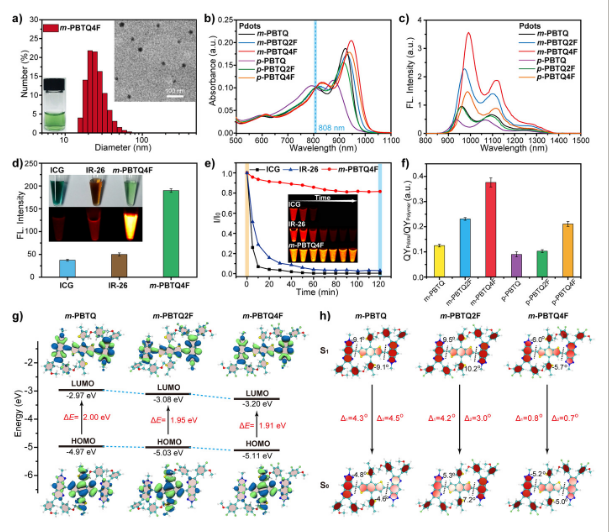Semiconducting Polymer Dots with Dual‐Enhanced NIR‐IIa Fluorescence for Through‐Skull Mouse‐Brain Imaging (Angew. Chem. Int. Ed.,2020,59(9):3691-3698)
Fluorescence probes in the NIR-IIa region show drastically improved imaging owing to the reduced photon scattering and autofluorescence in biological tissues. Now, NIR-IIa polymer dots (Pdots) are developed with a dual fluorescence enhancement mechanism. First, the aggregation induced emission of phenothiazine was used to reduce the nonradiative decay pathways of the polymers in condensed states. Second, fluorescence quenching was minimized by different levels of steric hindrance to further boost the fluorescence. The resulting Pdots displayed a fluorescence QY of ca. 1.7 % in aqueous solution, suggesting an enhancement of ca. 21 times in comparison with the original polymer in tetrahydrofuran (THF) solution. Small-animal imaging by using the NIR-IIa Pdots exhibited a remarkable improvement in penetration depth and signal to background ratio, as confirmed by through-skull and through-scalp fluorescent imaging of the cerebral vasculature of live mice.

The full details of the publication can be found here:
https://onlinelibrary.wiley.com/doi/abs/10.1002/anie.201914397




